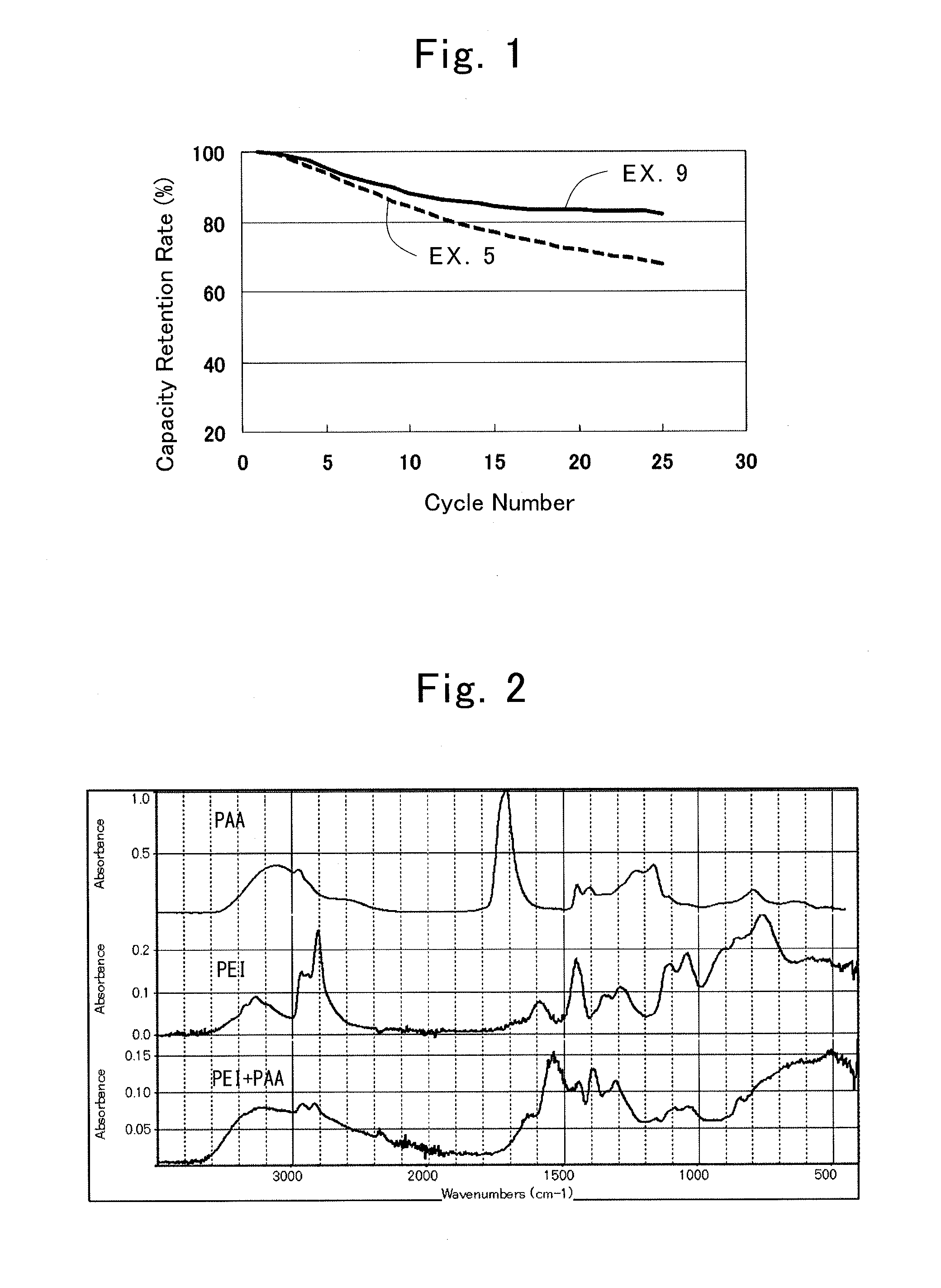Positive electrode for secondary battery, method for producing the same, and nonaqueous secondary battery
a secondary battery and positive electrode technology, applied in the manufacturing process of electrodes, cell components, electrochemical generators, etc., can solve the problems of reducing output power, affecting the quality of secondary batteries, and drastically deteriorating battery characteristics, so as to maintain high battery characteristics, high capacity, and high strength
- Summary
- Abstract
- Description
- Claims
- Application Information
AI Technical Summary
Benefits of technology
Problems solved by technology
Method used
Image
Examples
first example
[0054]In the present example, LiNi1 / 3Co1 / 3Mn1 / 3O2 powder as positive electrode active material particles, polyethylene imine (PEI) as a cationic material, and polyethylene glycol (PEG) having a number average molecular weight (Mn) of 200 as an anionic material.
[0055]Powder of the positive electrode active material particles was dispersed in acetone at a concentration of 0.1 mass %, and zeta potential was measured. Measurement of zeta potential was performed by laser Doppler electrophoresis by using a quartz cell at a temperature of 25 deg. C. As a result, the positive electrode active material particles had a zeta potential of −75.7 mV. Next, polyethylene imine (PEI) having a number average molecular weight of 1,800 was dissolved at a concentration of 0.1 mass % in a dispersion fluid of the above positive electrode active material particles in acetone, and the mixture was stirred for one hour at 25 deg. C. Then the mixture was filtered, washed with ethanol and air dried, thereby obt...
second example
[0067]A positive electrode was formed by forming a coating layer on a positive electrode active material layer in the same way as in the First Example, except for using polyethylene glycol (PEG) having a number average molecular weight (Mn) of 2,000. The coating layer comprising polyethylene imine (PEI) and polyethylene glycol (PEG) had a thickness of about 5 nm.
[0068]A lithium-ion secondary battery was produced in the same way as in the First Example, except for using this positive electrode. A capacity retention rate at each discharge rate was calculated in the same way as in the First Example. The result is shown in Table 1.
third example
[0069]A positive electrode was formed by forming a coating layer on a positive electrode active material layer in the same way as in the First Example, except for using polyethylene glycol (PEG) having a number average molecular weight (Mn) of 20,000. The coating layer comprising polyethylene imine (PEI) and polyethylene glycol (PEG) had a thickness of about 5 nm.
[0070]A lithium-ion secondary battery was produced in the same way as in the First Example, except for using this positive electrode. A capacity retention rate at each discharge rate was calculated in the same way as in the First Example. The result is shown in Table 1.
PUM
 Login to View More
Login to View More Abstract
Description
Claims
Application Information
 Login to View More
Login to View More - R&D
- Intellectual Property
- Life Sciences
- Materials
- Tech Scout
- Unparalleled Data Quality
- Higher Quality Content
- 60% Fewer Hallucinations
Browse by: Latest US Patents, China's latest patents, Technical Efficacy Thesaurus, Application Domain, Technology Topic, Popular Technical Reports.
© 2025 PatSnap. All rights reserved.Legal|Privacy policy|Modern Slavery Act Transparency Statement|Sitemap|About US| Contact US: help@patsnap.com

